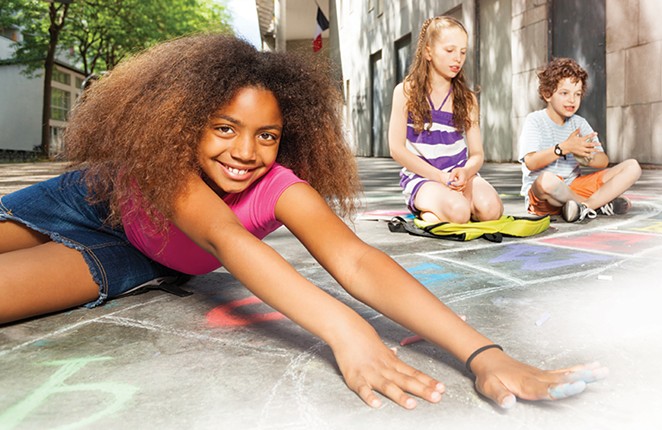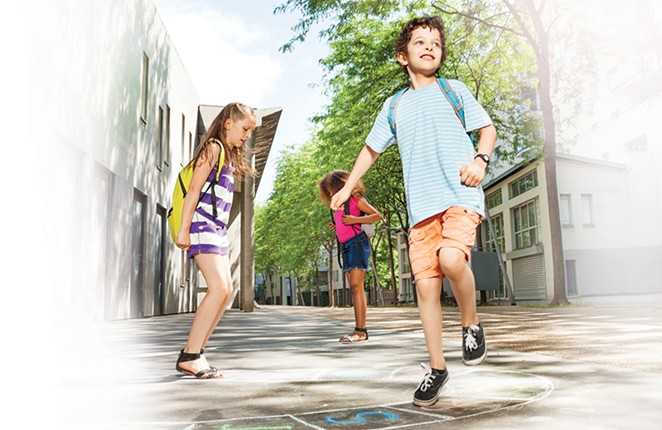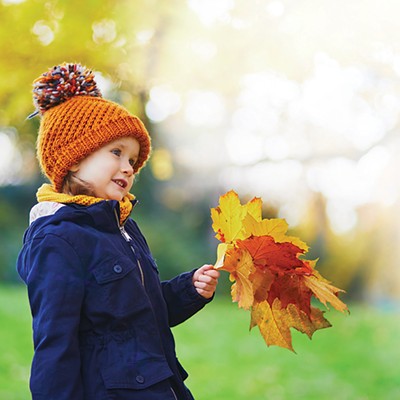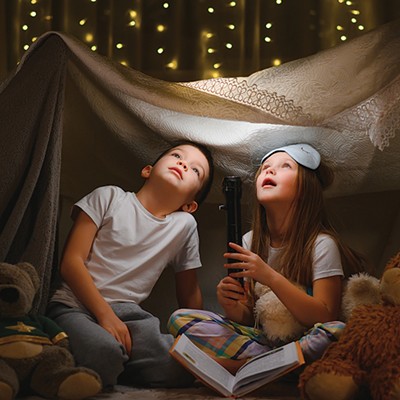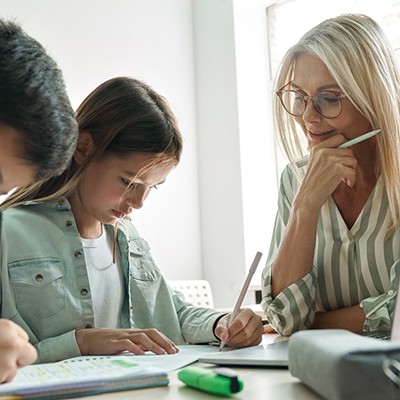Back to school is an exciting time for families, but it can also be when academic anxiety sets in. After a long, carefree summer, switching gears to tests and homework can feel like a big shift.
For families with elementary-aged children, now is the perfect time to practice active reading skills at home. Parental involvement with reading can have a significant impact on learning outcomes.
According to the famous "million-word gap" study conducted by Jessica Logan at The Ohio State University and published in the Journal of Developmental and Behavioral Pediatrics, kids whose caregivers read five books a day to them at home will hear about 1.4 million more words than their peers who were never read to by the time they enter kindergarten, giving them a huge advantage when it's time to join the classroom.
Beyond read-alouds, families can utilize a multi-sensory approach to reading practice that goes beyond visual and auditory methods. Not every child learns the same way, and some kids do better when they can touch things or move their entire bodies.
Especially for fidgety kids who find it challenging to sit still for long periods, kinesthetic activities can provide an alternative method of learning that meets their unique needs. When reading practice becomes active, kids have fun!
The sky's the limit when it comes to writing the alphabet using anything but a pen or pencil. You can spell words in shaving cream, whipped cream, oatmeal or play dough, craft letters from pebbles, sticks, string, beads or cereal pieces, paint them on the driveway with soapy water and a large paintbrush, or even make whole body letters using your arms, legs and a willing partner. If you purchase a set of alphabet cookie cutters, you can stamp them in playdough or cookie dough, then bake your tasty treats to eat. Fancy a delicious letter "d" anyone?
The key is to make it fun; what does your child already love to play with, and how can those toys be turned into a creative learning tool? A popular example—if you collect old Lego pieces and write letters on them, you can organize them—all vowels in white, all consonants in color—using small pieces for short consonants like "c" and "v" and big pieces for long consonants with tails like "j" or "y." Snap the letters together in word families for phonics lessons; "cat" becomes "bat," "rat," "hat," etc., simply by swapping out the first piece. Small magnet toys can also work for this purpose, or classic wooden letter blocks.
Gross Motor Movement
Exercising while you learn is a win-win, and chalk outside is a versatile tool. Try word family hopscotch to jump from "all" to "call" to "small" to "tall," etc., or draw a big 26-letter grid on the ground and have your child jump to different letter spots to spell words; hopping from "d" to "o" to "g" spells "dog." A variation of this game spreads the letters out, and then your kid can ride their bike or scooter between them to spell different words.
For sports enthusiasts, you can write letter combinations like "ch" and "at" on the ground and toss a beanbag, bounce a ball or shoot a hockey puck at different phonograms to spell sight words. Tape letter cards to bowling pins and knock them down to spell words or shoot Nerf gun darts at letters on a chart. You can also modify a Twister mat with letter cards and twist your way to spelling new words. What other ways can you move and spell at the same time?
Grouping Mystery Objects
What kid doesn’t love a good mystery game? Create a simple sensory bin by filling a plastic tub with rice, beans, dried pasta, cotton balls, etc. and hide small objects inside. As your child digs through the bin, they can sort the objects they find into the same letter groups, i.e., a marble, a magnet, and a toy mouse all belong to the first letter “m.” You can also send your kid on a scavenger hunt by having them collect and sort objects that match the first letter of the word written in chalk or on a card, such as putting a toy truck on the letter “t” and a seashell on the letter “s.”
Who says learning needs to be boring? With all of these creative ideas for practicing their literacy skills at home, your ch

